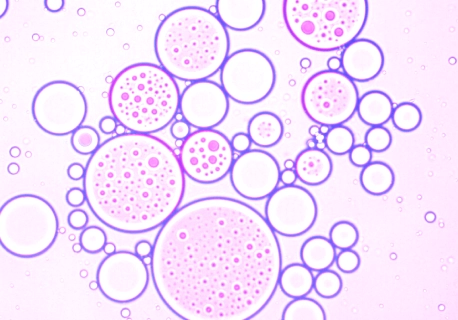Research Area
To increase R&D efficiencies, is it very important to limit the portfolio risk and related cost. It is equally important to increase innovation potential internally and an openness to collaborative research externally with competent partners. The emergence of Nano and micro particle based drug delivery platforms greatly impacted value of R & D of drug pipeline, Nano and micro particle based drug delivery platforms offer several technical and strategic solution to above challenges. Nano and microparticle platforms not only offer unique chemical/physical properties to therapeutic drug but they also improve product performance thereby increasing the profitability and market sustainability.

2D printed medicines
2D-printed medicines are revolutionizing drug delivery by enabling accurate drug distribution, on-demand manufacturing, and the ability to combine multiple drugs without interaction. Using specialized printing devices, therapeutic agents are precisely deposited onto edible orodispersible films, allowing patient-specific dose customization. This approach enhances treatment efficacy and significantly improves patient compliance, particularly for those with difficulty swallowing conventional tablets.
ORO-DISPERSIBLE FILMS (ODFs)
These are thin, flexible drug delivery systems designed to dissolve quickly in the mouth without the need for water. They are particularly beneficial for patients who have difficulty swallowing tablets or capsules, such as pediatric, geriatric, or dysphagic patients. They make medication more effective locally and highly customizable. Mainly produced by solvent Casting
ORALLY DISINTEGRATING TABLETS (ODTs)
ODTs dissolve quickly in the mouth without water, improving patient convenience and compliance. ODTs ensure rapid drug absorption, leading to faster onset of action, making them ideal for conditions like pain management, allergies, and neurological disorders. They are formulated using techniques like freeze-drying, direct compression, and sublimation to achieve fast disintegration.
3D printed Tablets
3D-printed tablets and capsules offer high flexibility in drug delivery, allowing single or multiple-compartment drug dosing and treatment regimes. Drug release can be precisely controlled by incorporating various polymers or their combinations. The growing demand for personalized treatment and on-demand manufacturing at pharmacies by 3D printing provides clinicians and physicians greater flexibility in tailoring therapies to individual patient needs.
Hotmelt extrusion
HME is a manufacturing technique used to develop solid dispersions, granules of drugs in polymer matrices, enhancing solubility and bioavailability. HME enables controlled drug release, eliminates the need for solvents, and improves the stability of poorly water-soluble drugs. This process is widely used in sustained-release formulations, taste masking, and 3D-printed pharmaceuticals.
ORAL SOLID DOSAGE FORMS (OSDFs)
They include tablets, capsules, powders, and granules, each designed for specific drug delivery needs. OSDs offer controlled drug release options, such as immediate, extended, or delayed release, improving therapeutic efficacy. They are highly stable with a long shelf life, making them ideal for large-scale production and distribution.
Drug-device combination
Drug-device combinations are innovative medical products that integrate both a drug and a device in a single unit, designed to deliver the drug efficiently and accurately. These combinations ensure precise drug delivery, often allowing for controlled release or targeted therapy. The development of drug-device combinations is driven by the demand for personalized treatments and improved patient compliance.
Mucoadhesive DDS
Mucoadhesive systems are designed to adhere to mucosal surfaces (such as the oral, nasal, or vaginal mucosa) to prolong drug retention and enhance local or systemic absorption. These systems utilize mucoadhesive polymers that bind to mucus, ensuring controlled and sustained drug release. They improve bioavailability by bypassing first-pass metabolism and allowing drugs to be absorbed directly through mucosal membranes.
suppositories
Lipospheres
NANOSTRUCTURED LIPID CARRIERS (NLCs)
Microbicides
Microbicides are dosage forms which contains drugs that prevent vaginal and/or rectal transmission of HIV and/or sexually transmitted infections. Stavudine microbicidal gels proved to have optimal antimicrobial, spermicidal and anti-HIV activity. (Shegokar et.al.,) Development of Mucoadhesive Gel Microbicide to Target Mucosal HIV Reservoirs
SOLID LIPID NANOPARTICLES (SLNs)
Nanocrystals
Poor solubility of new drugs and their related low oral bioavailability and general delivery problems are becoming a major challenge. Nanocrystals being a kind of “universal” formulation approach for these molecules are reviewed in many papers by (Shegokar et.al.,) regarding the industrial feasibility, production processes (bottom-up and top-down technologies), regulatory aspects, nanotoxicology and drug targeting.
Metal Nanoparticles
Polymeric nanoparticles
Polymeric nanoparticles are sub-micron (1 to 1000 nm) colloidal particles which are composed of one or multiple polymers. The particle core encapsulates drug in inner matrix or is adsorbed partially on the surface of particle. (Shegokar et.al.,) researched polymeric particles for industrial use.
Nano-micro emulsions
POLYMERIC LIPID Hybrids (PLHs)
Pediatric suppositories
Nanostructured lipid carriers (NLCs)
Solid lipid nanoparticles (SLNs)
Metal Nanoparticles
Nano-micro emulsions
Lipospheres
(Shegokar et.al. – stavudine Lipospheres)
Microbicides
(Shegokar et.al. – stavudine microbicidal gels)







